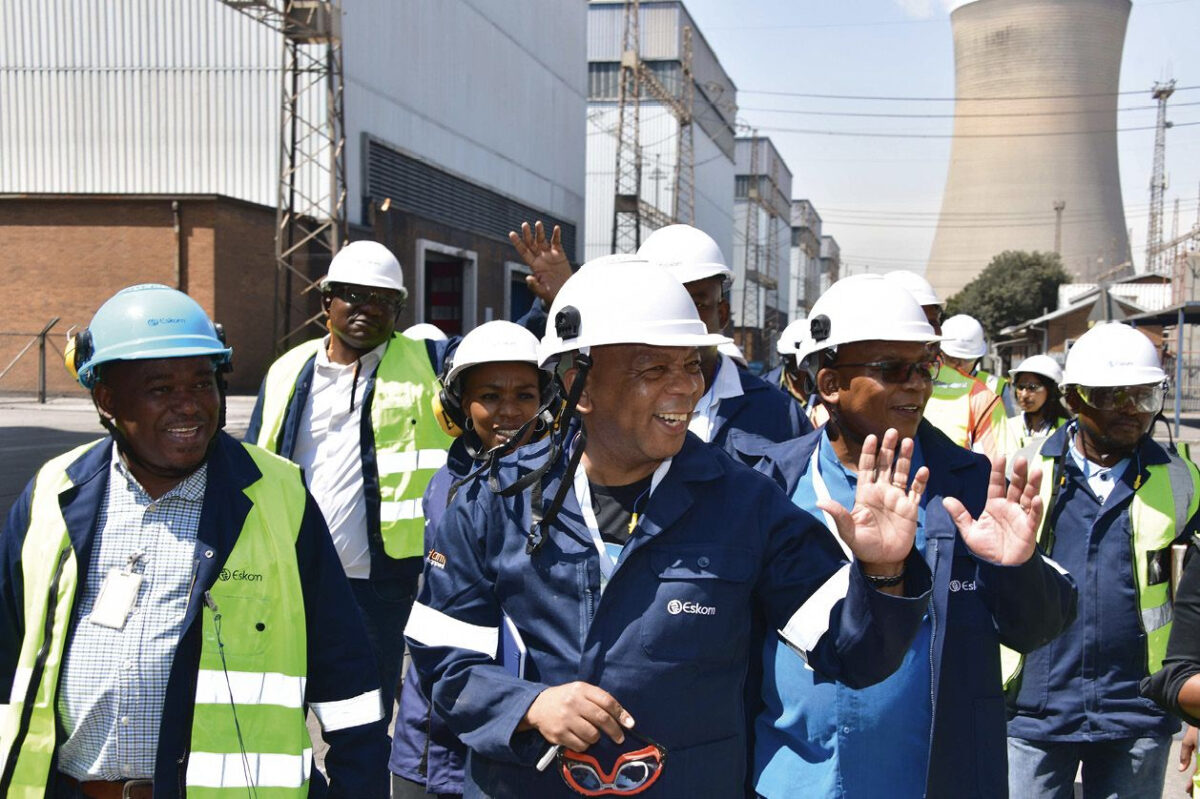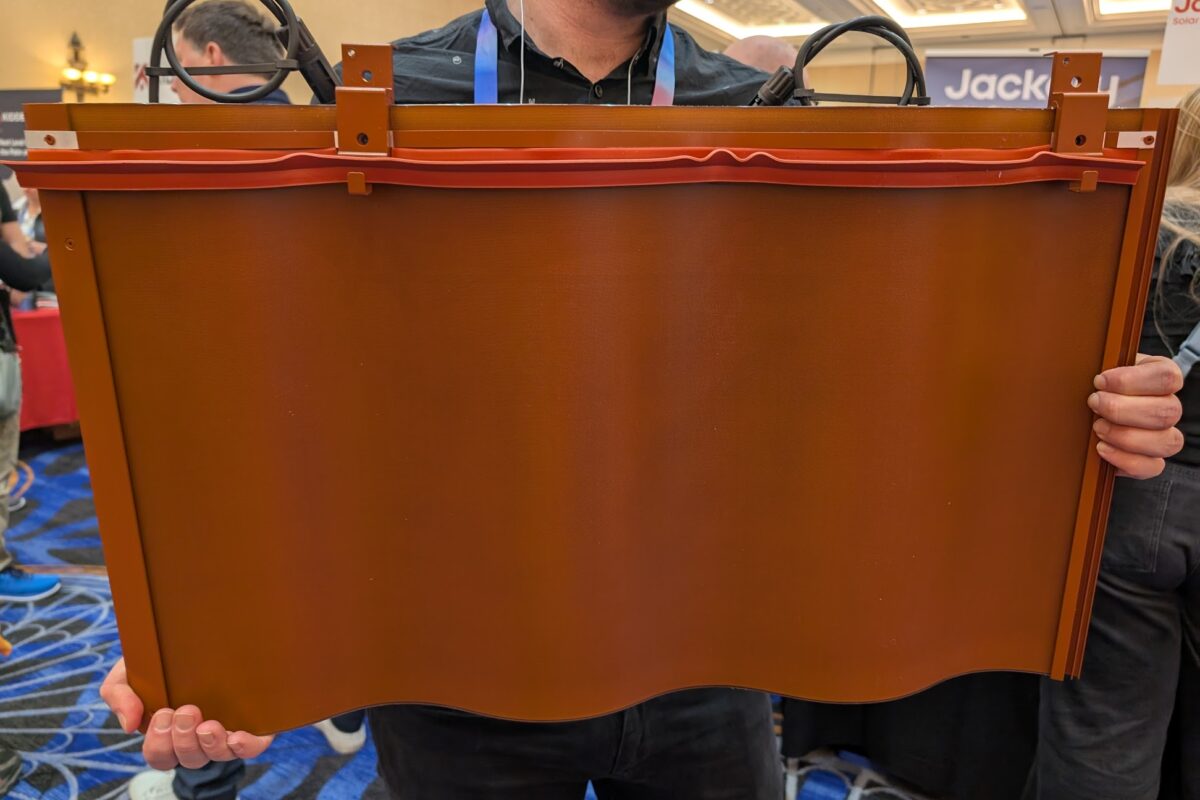With an electricity transmission crisis looming in South Africa, it appears that power generation project planners would be wise to conduct professional grid studies before spending big on development.
While South Africans are bracing themselves for up to 16 hours of daily blackouts in the current winter, the energy crisis in the country – largely caused by poor planning and mismanagement by the ruling ANC government – has reached a point where ministries are going it alone to secure reliable electricity. This knee-jerk reaction by government ministers could undermine already fragile transmission infrastructure and deepen the energy crisis further.
It is almost entirely a crisis of the government’s making and has led to a bizarre situation where cabinet is functioning as a de facto government against the regular legislature, against the background of an outdated Integrated Resource Plan (IRP) and a legally compliant Integrated Energy Plan.
Competing programs
South African president Cyril Ramaphosa in March gave Kgosientsho Ramokgopa responsibility for resolving the load shedding crisis in the newly appointed role of Minister in the Presidency for Electricity. The Ministry of Mineral Resources and Energy (MMRE), which stands accused of deepening the energy crisis, will remain under the leadership of Gwede Mantashe.
In office since 2019, Mantashe has overseen three procurement programs which have attempted to secure 9.7 GW of new power generation capacity, with 6.7 GW from solar and wind under two windows of the Renewable Energy Independent Power Producer Procurement Programme (REIPPPP). The first 430 MW of new solar and wind capacity is expected online late in the year.
Sluggish progress on realizing the additional capacity has been exacerbated by a lack of grid connection capacity offered by national utility Eskom. The power company said it had around 9 GW of spare capacity when the fifth bid window of the REIPPPP was announced, in April 2022. President Ramaphosa’s decision to raise the threshold for clean energy projects to require a license, from 1 MW to 100 MW, in August 2022, however, saw independent power producers swiftly gobble up that Eskom grid capacity.
The appointment of Ramokgopa supposedly saw him assume some of Mantashe’s responsibilities and the new minister has racked up the air miles meeting energy industry representatives, big electricity consumers, Eskom, and the cabinet. But the MMRE still has to sign off on power purchase agreements. Ramokgopa appears to have no office, no budget, and no plan.
Ramaphosa had also, in 2020, appointed a Presidential Climate Commission within the Ministry of the Presidency. The commission has recommended 50 GW to 60 GW of new renewable energy generation capacity plus 3 GW to 5 GW of peaking generation capacity to maintain supplies at periods of high demand, with the recommendations part of the IRP document which aims to estimate how to meet energy demand to 2030.
Energy procurement
Mantashe has announced a request for proposals for the supply of 5 GW of clean energy, which will be issued by his ministry this year as bid window 7 of the REIPPPP. The following bid window, aiming to procure another 5 GW of capacity, will open between December 2023 and February 2024. The minister said the two procurement rounds will be accompanied by attempts to commission a total 1.23 GW of battery storage projects, without stating what energy storage capacity such sites would have. Mantashe also plans a 3 GW gas-to-power procurement by the end of August and a 2.5 GW nuclear round between December and February.
Elsewhere across the cabinet, the forestry, fisheries, and environment minister, Barbara Creecy, has said the government is processing applications for approximately 2.9 GW of solar facilities and 6.89 GW of wind turbines, with associated battery storage, transmission, and distribution infrastructure.
The Transnet National Ports Authority has issued a request for proposals for a 20 MW solar plant plus battery storage at Richards Bay as part of a plan to roll-out around 100 MW of renewables across all the authority’s commercial seaports. Meanwhile, the Department of Water and Sanitation has launched an expression of interest to procure 19 power plants with an unspecified generation capacity, including floating solar.
The National Energy Regulator of South Africa (NERSA) in May approved Eskom’s bid to procure 100 MW of solar plus a 150 MW battery at the Komati Power Station in Mpumalanga; 75 MW of solar at Lethabo Power Station, in the Free State; and 19.5 MW of photovoltaics at Sere Wind Farm in the Western Cape.
Shovel-ready status
With government departments hatching their own clean energy plans – seemingly without reference to Mantashe’s REIPPPP strategy – Eskom and trade bodies the South African Photovoltaic Industry Association and the South African Wind Energy Association conducted a Renewable Energy Grid Survey to capture the state of the industry.
It found around 19.6 GW of solar-plus-battery capacity, 13.3 GW of photovoltaics, 21 GW of wind generation, and 7.5 GW of wind-plus-battery projects are at or near construction-ready status in the country.
Policy changes
To help address the energy crisis, Ebrahim Patel, minister of trade, industry, and competition, has suspended parts of the nation’s Competition Act to enable energy companies and consumers to resolve electricity supply constraints.
Minister Creecy is asking the public whether the development and expansion of solar and battery sites can sidestep usual environmental permitting requirements.
With more than 50 GW of solar and wind power expected, Segomoco Scheppers – MD of Eskom’s new transmission company – told electricity transmission providers the nation will need more than 1,500 km of new transmission lines annually for the next decade. That’s almost five times more than Eskom’s transmission unit is currently installing.
More than 122,600 megavolt-amps (MVA) of additional transformer capacity will be needed, Scheppers said, versus Eskom’s currently installed base of just over 160,000 MVA.
With only 19,060 MVA of transformer capacity added since 2013, Eskom Transmission Project General Manager Naresh Singh told the same gathering the utility’s procurement processes “have become bureaucratic, lethargic, non-value creating, and ineffective.”
Scheppers said that a new approach would see an engineer from Eskom Transmission or a site-owner complete front-end engineering design before engaging a single engineering, procurement, and construction services contractor to complete the job.
Eskom’s transmission company has yet to be fully unbundled from its parent, however. Regulator NERSA licensed the move in March and public enterprises minister Pravin Gordhan has said the new National Transmission Company South Africa (NTCSA) would be operational by November. The proposed unbundling would leave NTCSA dependent on Eskom for its funding, however, because creditors want reassurance. Financial news service Bloomberg has reported fears an inability to raise cash from other sources will hamper the NTCSA’s effectiveness.
Government bailout
The government in April announced a taxpayer bailout for Eskom which will see the Treasury hand over ZAR 78 billion ($4.16 billion) in the current financial year – which ends on Feb. 29, 2024; ZAR 66 billion in 2024/25; and ZAR 40 billion in 2025/26 before assuming up to ZAR 70 billion of Eskom’s loan commitments in the latter year. The utility’s debt has risen to ZAR 439 billion and the taxpayer will have contributed almost ZAR 495 billion to the power company by 2026, under the planned bailout.
The Treasury appointed an international consortium of energy companies to review all of Eskom’s coal plants and advise on actions to restore them to their original production specifications.
To rub salt into the wounds of South Africa’s energy crisis, vandalism and cable theft caused 23 major electricity substation outages in Mandela Bay in May. A month earlier, electricity pylons in Tshwane were destroyed in acts of alleged vandalism.
About the author: Bryan Groenendaal started out installing rooftop solar systems 12 years ago, in Johannesburg, South Africa. He then progressed to larger industrial and commercial solar projects and then specialized as a utility scale solar project developer. Groenendaal has experience working in no less than eight countries in Southeast Africa. Groenendaal notes that South Africa’s president has increased the threshold of systems without a license required to wheel electricity via the grid, to 100 MW, in August 2021. “This opened the solar PV market to a flood of projects in both the private and public sectors, which allows municipalities to procure new generation capacity from IPPs [independent power producers],” says Groenendaal. “However, the transmission infrastructure is limited to how much renewable energy it can manage.”
This content is protected by copyright and may not be reused. If you want to cooperate with us and would like to reuse some of our content, please contact: editors@pv-magazine.com.



5 comments
By submitting this form you agree to pv magazine using your data for the purposes of publishing your comment.
Your personal data will only be disclosed or otherwise transmitted to third parties for the purposes of spam filtering or if this is necessary for technical maintenance of the website. Any other transfer to third parties will not take place unless this is justified on the basis of applicable data protection regulations or if pv magazine is legally obliged to do so.
You may revoke this consent at any time with effect for the future, in which case your personal data will be deleted immediately. Otherwise, your data will be deleted if pv magazine has processed your request or the purpose of data storage is fulfilled.
Further information on data privacy can be found in our Data Protection Policy.